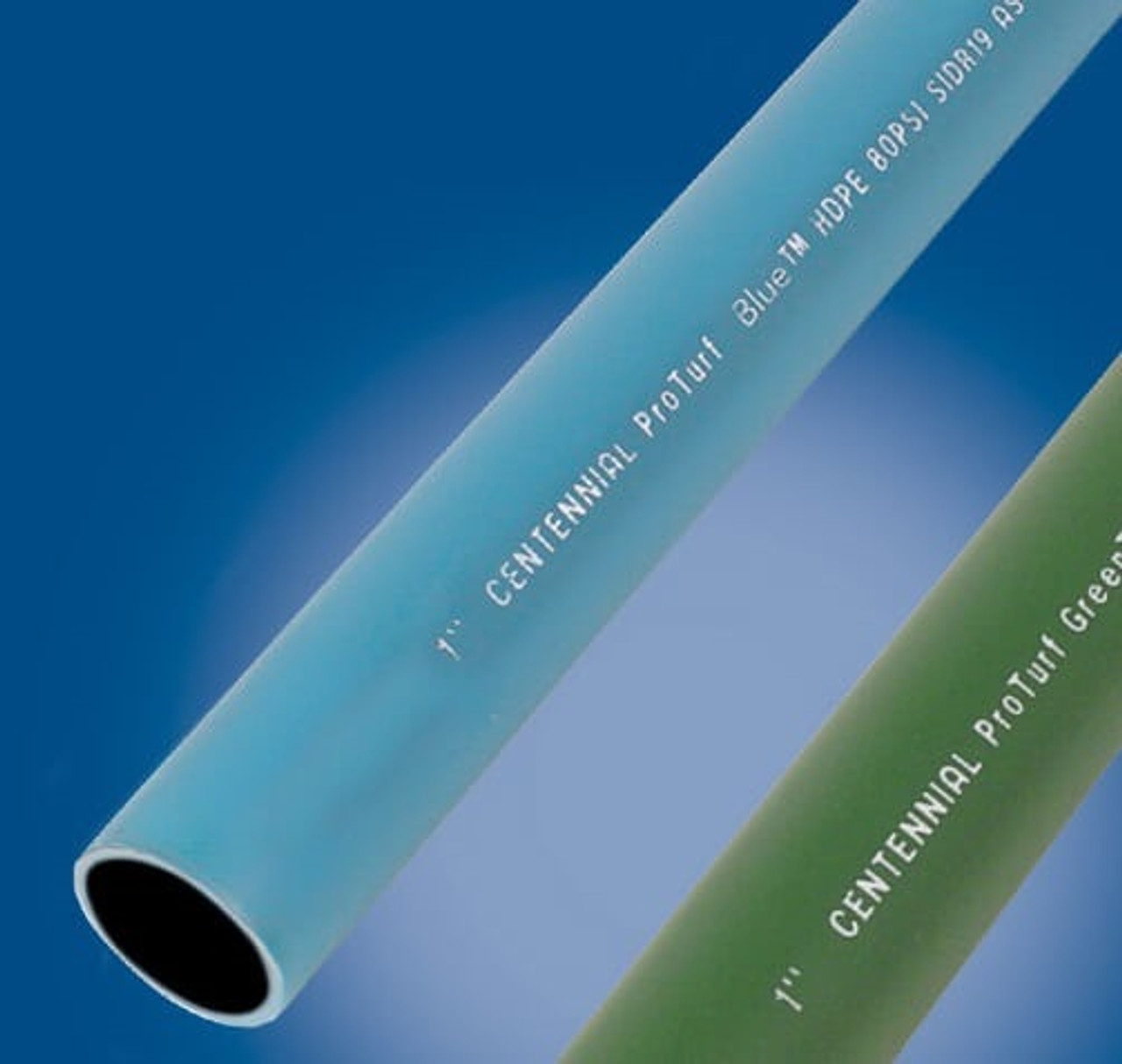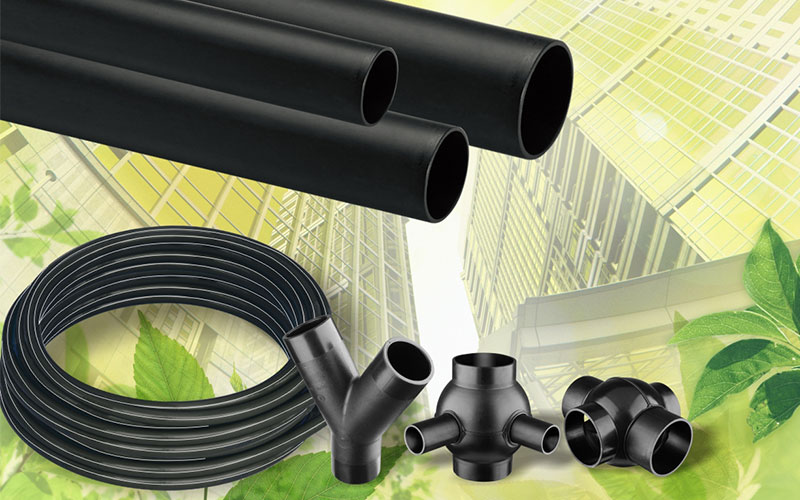The Innovation of American Plastics HDPE Pipe Manufacturing: What You Need to Know
Discover the Manufacturing Process Behind High-Quality HDPE Pipeline and Its Applications
The manufacturing procedure of top notch HDPE pipelines is detailed and systematic. It starts with the selection of basic materials that enhance efficiency. Following this, ethylene undertakes polymerization to develop resin, which is then shaped through extrusion. Quality control is critical, making certain that the end product meets strict standards. The journey of HDPE pipes doesn't end with production. Their applications across numerous sectors expose a wider value worth analyzing.
Recognizing HDPE: Features and Advantages

High-density polyethylene (HDPE) is a flexible polycarbonate understood for its longevity and resistance to various environmental aspects. This product displays superb tensile toughness, making it appropriate for requiring applications. Its low-density framework adds to a lightweight product, facilitating convenience of handling and installation. HDPE also showcases remarkable resistance to chemicals, which minimizes degradation when exposed to harsh substances.
The material's low moisture absorption even more enhances its durability, making it suitable for usage in pipelines and storage space tanks. Furthermore, HDPE is immune to ultraviolet (UV) radiation, making sure that items preserve their stability even when exposed to sunshine. Moreover, its adaptability permits for the development of complex shapes without compromising toughness. The environmentally friendly nature of HDPE, commonly stemmed from recycled materials, includes to its allure, advertising lasting methods in production. Generally, these residential properties and benefits make HDPE a preferred option for different industrial and consumer applications.
Basic Material Choice for HDPE Manufacturing
The choice of resources for HDPE production is vital to validate the last product fulfills the wanted specs and quality requirements. High-density polyethylene (HDPE) is mostly generated from polymerized ethylene, acquired from fossil fuels such as gas or petroleum. The top quality of these feedstocks greatly affects the mechanical and thermal properties of the last HDPE.
Additives additionally play a substantial function in improving HDPE's performance, consisting of anti-oxidants, UV stabilizers, and colorants, which boost toughness and resistance to environmental factors. The choice process should consider not just the chemical structure of the raw products but likewise their handling characteristics to ensure reliable manufacturing.
Additionally, the sourcing of basic materials ought to focus on sustainability and conformity with environmental guidelines, as responsible techniques are necessary in today's market. Ultimately, careful basic material choice lays the foundation for creating top quality HDPE pipes suitable for varied applications.
The Extrusion Process: Forming HDPE Pipeline
The extrusion procedure plays an essential role in forming HDPE pipelines, beginning with thorough product preparation techniques that ensure excellent flow and consistency. Equally essential is the style of the die, which straight affects the last measurements and surface high quality of the pipe. Together, these factors contribute considerably to the efficiency and quality of HDPE pipeline manufacturing.
Product Prep Work Techniques
Efficient manufacturing of HDPE pipelines begins with careful material preparation strategies, particularly the extrusion process. During this phase, high-density polyethylene material is initial dried out to get rid of moisture, ensuring optimal flow qualities. The resin is after that fed into the extruder, where it undergoes home heating and melting, transforming into a thick state. This heating procedure is very carefully managed to maintain the product's integrity and efficiency. The molten HDPE is forced with a die, shaping it right into a constant pipe type. Proper temperature monitoring during extrusion is essential, as it straight impacts the product's properties and the end product top quality. When shaped, the HDPE pipeline is cooled and reduced to specified lengths, prepared for subsequent handling and applications.
Die Design Relevance
Precision in die layout plays an important function in the extrusion procedure of HDPE pipes. The die works as the last shaping tool, straight influencing the pipe's dimensions, wall density, and surface finish. A properly designed die assurances uniform product flow, lowering problems such as abnormalities and vulnerable points. The geometry of the die should be optimized to fit the certain residential or commercial properties of HDPE, including its viscosity and thermal behavior during extrusion. Furthermore, the cooling price of the material as it travels through the die can considerably influence the pipeline's structural stability. Investing in innovative die innovation is important for suppliers intending to generate premium HDPE pipelines that meet market requirements and consumer expectations.
Top Quality Control Measures in HDPE Production
Although different aspects influence the high quality of HDPE pipe production, reliable quality assurance steps are essential to guarantee consistency and dependability in the last item. Secret top quality control practices include rigorous material evaluation, confirming that the raw polyethylene fulfills recognized standards for purity and thickness. During the extrusion process, criteria such as temperature level, stress, and cooling time are carefully monitored to preserve dimensional precision and structural honesty
In enhancement, post-production screening is necessary; suppliers often carry out hydrostatic examinations to evaluate the pipe's toughness and resistance to stress. Aesthetic assessments for surface problems better improve high quality assurance. Qualification from relevant requirements companies, like ASTM or ISO, provides an additional layer of reputation. By executing these thorough top quality control procedures, suppliers can reduce flaws, improve efficiency, and make sure that the HDPE pipes satisfy the specific requirements of numerous applications, inevitably resulting in client complete satisfaction and count on the product.
Applications of HDPE Pipe Across Industries
HDPE pipes are made use of throughout numerous fields because of their toughness and adaptability. In water distribution systems, they guarantee efficient delivery, while in wastewater monitoring, they supply trustworthy remedies for waste transport. In addition, farming irrigation networks gain from HDPE's resistance to rust and flexibility, making it a suitable selection for modern farming practices.

Water Distribution Equipments
A significant number of industries rely upon high-density polyethylene (HDPE) pipes for effective water distribution systems. Recognized for their sturdiness and resistance to corrosion, HDPE pipelines are commonly used in municipal supply of water networks, agricultural irrigation, and industrial applications. Their light-weight nature assists in simple handling and installation, decreasing labor prices and time. In addition, HDPE pipelines can accommodate numerous pressure levels, making them ideal for both low and high-pressure systems. custom hdpe pipe manufacturing Midland TX. The versatility of the material permits for seamless combination right into existing facilities, decreasing the need for extensive excavation. HDPE's resistance to chemical seeping assurances that the water provided remains safe and tidy, making it an excellent selection for maintaining the quality of drinkable water across different markets.
Wastewater Monitoring Solutions
Reliable water circulation systems likewise lead the way for cutting-edge wastewater management services, where high-density polyethylene (HDPE) pipes play a considerable duty. Prominent for their longevity and resistance to corrosion, HDPE pipes are optimal for moving wastewater in various setups. Their versatility permits very easy installation in complex atmospheres, reducing the requirement for substantial excavation. In addition, HDPE's smooth interior surface area lowers friction, boosting circulation rates and effectiveness. These pipes are also immune to chemical leaching, making certain that pollutants do not jeopardize the surrounding setting. Industries, municipalities, and therapy facilities increasingly pvc 90 rely upon HDPE pipes for their integrity and longevity, making them a favored selection for modern-day wastewater monitoring systems. This versatility underscores the crucial significance of HDPE pipelines throughout countless applications.
Agricultural Irrigation Networks
Agricultural irrigation networks benefit considerably from the use of high-density polyethylene (HDPE) pipes, which offer reliable and reliable water delivery to crops. HDPE pipes are lightweight, making them simple to move and install, while their versatility enables numerous configurations in varied surfaces. These pipelines show exceptional resistance to corrosion, chemicals, and UV radiation, making certain sturdiness in severe agricultural environments. Additionally, their smooth interior surface reduces friction loss, enhancing water circulation and minimizing power prices linked with pumping. The long life of HDPE pipelines, commonly going beyond 50 years, contributes to decrease upkeep and substitute expenditures. Farmers increasingly depend on HDPE pipelines to improve watering performance and promote sustainable farming methods, ultimately leading to boosted crop yields and source conservation.

Future Fads in HDPE Pipeline Technology
As the demand for sustainable and efficient facilities expands, improvements in HDPE pipeline modern technology are poised to try these out transform various markets. Arising fads consist of the integration of smart innovations, such as sensing units and IoT capacities, which assist in real-time monitoring of pipe conditions, minimizing upkeep costs and stopping leakages. Additionally, the growth of innovative production strategies, such as 3D printing, is making it possible for the manufacturing of complicated, personalized pipe designs that accommodate specific task demands.
In addition, the concentrate on recycling and circular economic climate methods is driving the development of HDPE pipes made from recycled materials, enhancing sustainability. Enhanced jointing methods, such as electro-fusion and mechanical installations, are likewise enhancing installation performance and integrity. The growing focus on environmental laws is pushing manufacturers to embrace greener production procedures, ensuring that HDPE pipelines not only fulfill market standards however also cultivate a more lasting future for facilities development.
Regularly Asked Concerns
How Does HDPE Contrast to Various Other Plastic Materials?
HDPE exceeds several other plastic materials regarding resilience, chemical resistance, and flexibility. Its reduced thickness and high tensile toughness make it optimal for various applications, usually exceeding choices in both performance and long life.
What Are the Environmental Impacts of HDPE Manufacturing?
The environmental effects of HDPE manufacturing consist of greenhouse gas emissions, energy intake, and potential pollution from producing procedures. In addition, improper disposal can result in dirt and water contamination, elevating concerns regarding lasting ecological impacts.
Can HDPE Pipes Be Reused?
Yes, HDPE pipelines can be recycled. Several centers accept utilized HDPE for handling, changing it right into new his comment is here items. This reusing adds to sustainability efforts, reducing plastic waste while preserving sources and energy in the production cycle.
What Is the Lifespan of HDPE Pipeline?

Exactly How Do Temperature Level Variations Impact HDPE Pipeline Performance?
Temperature variants significantly influence HDPE pipe efficiency, affecting flexibility and stamina. Heats can result in softening, while reduced temperature levels may create brittleness, eventually influencing the pipeline's sturdiness and suitability for different applications in diverse atmospheres.